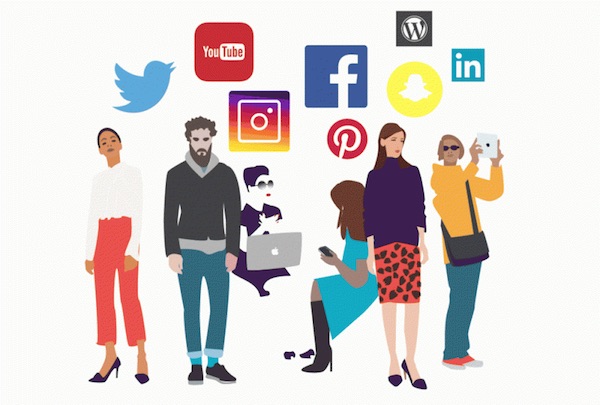by Benjamin Barnett, Co-Founder of Kapow Meggings
While all our working relationships are important, one that really took our business to the next level was teaming up with our sourcing agents in China. At the time, we had one factory who constantly dropping the ball. Communication was difficult, product quality was inconsistent, and they didn’t understand our brand and how it contributed to everything from product to packaging. Everything was harder than it should have been, and to be fair to the factory, we were new to the game and didn’t fully understand the landscape. As they say, “you don’t know what you don’t know”, and we didn’t know plenty.
After one particularly frustrating factory visit, it became clear we needed middle-man to handle our Chinese negotiations, product sourcing, and oversee manufacturing. So that day I jumped on a plane to Shanghai and started interviewing candidates. One agency in particular took the time to learn about our business and figure out the value they could add, including making sure our suppliers are ethically compliant, conducting comprehensive factory audits and product testing, and adding efficiencies to our global supply chain. Our relationship has grown over time and while it hasn’t always been smooth sailing, both parties have worked hard to improve it and we’re now in a much stronger position than we were a couple of years ago.
Untapped markets in China that may become the next “big thing”.
There’s an untapped market for challenger fashion brands in the e-commerce space to make an impact in China. One of my favourite quotes is from Jack Ma, the founder of Alibaba: “In other countries, e-commerce is a way to shop; in China, it is a lifestyle.” It’s a huge market both population- and numbers-wise, there’s a burgeoning middle class with greater disposable income than any other time in history, and Chinese consumers are habituated to retail shopping events like Singles Day, which last year saw $25b of purchases – 90% of which were made on mobile. The marketing and payment infrastructure is already in place, and WeChat has changed the game for consumers and retailers alike. People can pay for t-shirts, taxis, even street dumplings using the app. Experts say that this is where Facebook Messenger is heading, although China is well ahead of the game in this respect.
There’s already huge Chinese demand for foreign brands in categories like high-end fashion, baby formula, and personal care. The challenge for lesser-known fashion brands is breaking into the market and overcoming cultural barriers to get established and get their name out there. While they like high profile western status brands, Chinese consumers are relatively conservative fashion-wise. One way to overcome this is to look to markets like Korea – who have a high energy fashion scene that really pushes creative boundaries – as an entry point to test styles, brands, and routes to market.
Top challenges of doing business in China and how we overcame them.
We’ve learned how to do business in China the hard way – by making every mistake in the book. It’s given us invaluable experience in what to look out for, what needs to be closely managed, and how to get the best out of a relationship with a manufacturer.
Some of the pitfalls and surprises we’ve encountered include working with a trading company passing themselves off as a manufacturer, discovering that our contact was a woman pretending to be a man because she thought we’d prefer dealing with a male, suppliers substituting inferior materials to increase their margins, having factories answer “yes” when they didn’t understand what we were asking, getting our orders shunted behind clients with larger orders (even if we were there first), and having production disrupted by holidays like Chinese New Year, which is preceded by a rush of activity before everything shuts down for 3 weeks.
There are amazing opportunities in China, but taking the time to understand the landscape and finding the right partners is critical. Based on our experiences, there are a few best practices I’d recommend:
One of the founding principles of Toyota is “Genchi Genbutsu”, or “go and see.” Visiting your manufacturers is a must, both to see their facilities and to show that you’re serious about building a relationship. It’s so easy to start a business these days that Chinese factories get a lot of tyre-kickers who will place one test order and disappear. Often, they’ll price samples exorbitantly to weed out the time-wasters.
If you’re serious about doing business in China, hire a local procurement agent to help you negotiate with factories and source new suppliers. Their local knowledge and existing relationships will be far beyond what you could hope to achieve alone, and they’ll help find economies of scale, create systems for better quality production process, and fight for you when needed – like when you need to rush an order through, or issues crop up with production. They’ll also give you credibility with manufacturers.
Commit to building good factory relationships. We’ve moved factories 3 times in 2 years and let me tell you, researching, visiting, and testing new factories eats up a huge amount of time and emotional energy, not to mention cutting into profits. A reliable supply chain is critical, including finding a good shipping partner to get your goods to your warehouses once they’re finished. Make sure your partners know what your brand stands for and why.
No order ever goes 100% smoothly. Ever. Look all the possible points of failure during briefing, production, and delivery, and put processes in place to make sure they’re managed. This includes things like PIS sheets, robust QC inspections before the final invoice is paid, knowing how customs and FOB shipping works, right down to figuring out what size cartons you’ll pack your product in in. Setting up these processes will help future-proof your production.
“Trade War” and how to pivot.
It’s unpredictable, and every other week “trade-wars” seem to be ramping up. To the casual observer it looks like a game of international chicken, with both parties daring one another to see who blinks first. The US would appear to have the advantage here as it has more options on sanctions and tariffs, but China has a long history of thinking strategically and is unlikely to go down without a fight. It’s hard to know where this will end up, but the uncertainty it creates for businesses makes things difficult. Every time new tariffs are announced we scan the reports to see if we’re affected. If things get really bad and manufacturing in China becomes too expensive or no longer tenable, we’d consider moving production elsewhere in Asia. We’re hoping it doesn’t come to that, as that kind of move would be hugely disruptive.
Benjamin Barnett is co-founder of Kapow Meggings, a lifestyle apparel brand that makes high quality men’s leggings designed for fitness, fashion and festivals. Ben is based in Sydney, Australia and travels regularly to China to oversee manufacturing. His 15-year marketing career spans international ad agencies and global brands, including 5 years with US tech brand Yelp.
from Young Upstarts https://ift.tt/2SA6Bll via website design phoenix












 Tesma Gwee is the Senior Marketing Manager at
Tesma Gwee is the Senior Marketing Manager at 
 , a mobile care companion for pregnancy, birth and postpartum, to help healthcare practitioners deliver better health outcomes for women and children in the United States and beyond. The technology platform she and her team built has since impacted nearly 1 million families on their journey toward optimal health and wellness during one of life’s most precious times. iBirth was acquired in June 2018 by Babyscripts, Inc..
, a mobile care companion for pregnancy, birth and postpartum, to help healthcare practitioners deliver better health outcomes for women and children in the United States and beyond. The technology platform she and her team built has since impacted nearly 1 million families on their journey toward optimal health and wellness during one of life’s most precious times. iBirth was acquired in June 2018 by Babyscripts, Inc..





